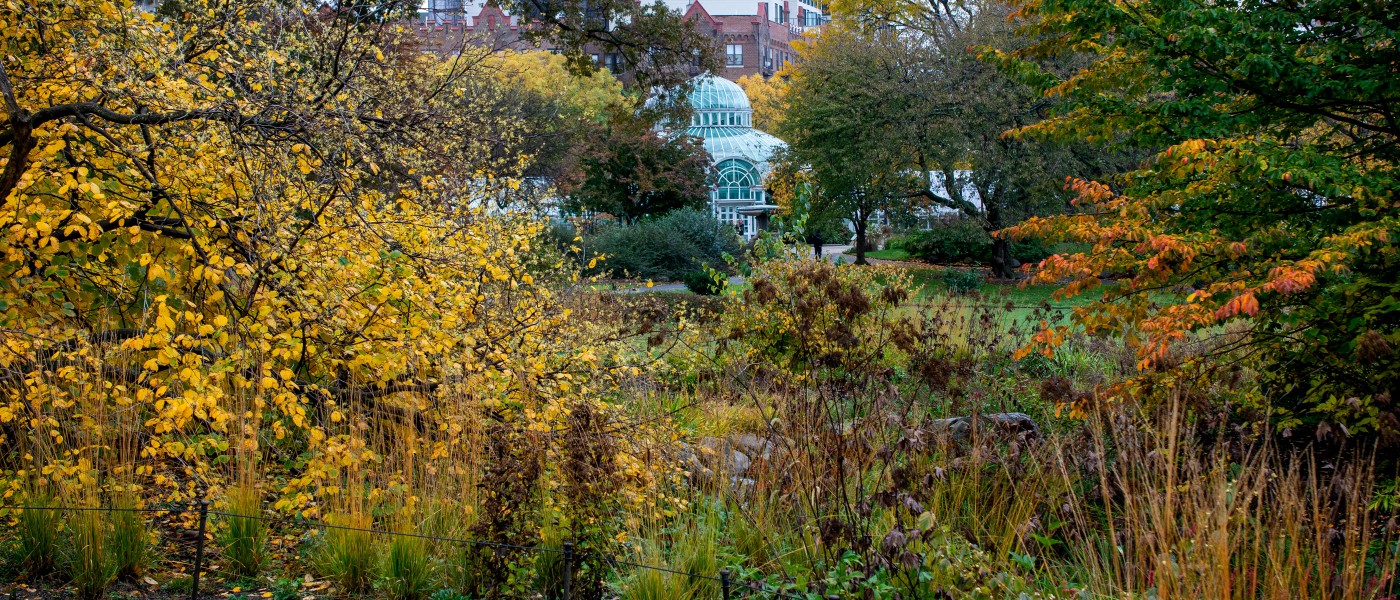Lenapehoking: The Land of the Lenape
Brooklyn Botanic Garden has recently adopted a living land acknowledgement to honor Native people who once lived here and were forced out, and to recognize the history of colonialism and its ongoing impact on Native people and their homelands.
The Garden, and the rest of New York City, occupies land that was once home to the Lenape people. The Lenape land, or Lenapehoking, included parts of what are now New York, New Jersey, and Pennsylvania. Europeans arrived in the 1600s, colonizing this land, taking an unforgivable human toll, and forever altering the natural history of this continent.
We talked with Heather Bruegl, a historian and director of education for Forge Project and a member of the Oneida Nation, about Lenape history, the importance of making a living land acknowledgement, and the value of examining the stories we tell about natural history and the Earth we live on.
BBG: How has the history of the land now occupied by New York City traditionally been told?
HB: It really isn’t told fully—we usually get only one perspective, and that starts with the introduction of colonial history. People tend to forget the history of this place before the arrival of Christopher Columbus. In huge metro areas like New York City, there is virtually no trace of us now. When you think of New York, you think about art, culture, finance—you don’t think of the Indigenous people who lived here.
How did people view their relationship with the land in Lenape culture before the arrival of the Europeans?
The Lenape people, and Indigenous people in general, have always assumed more of a stewardship role in the way we treat the land, plants, and wildlife. Think of the seventh- generation principal—that decisions that involve the land must be sustainable for seven generations to come. There’s a sense we are borrowing our resources from our descendants. Native people also believe that the Earth is alive, and that everything living is a part of it.
That’s very different from the European mindset—of drawing boundaries and parceling land through purchases and treaties.
Definitely. And the colonists also used deception. This ultimately set the stage for the forced migration of Native people further and further west. The Lenape were initially pushed into what is now Ohio, but then through a series of treaties moved to Indiana, and eventually to Kansas and then Oklahoma.
And even though many Americans have some familiarity with the myth of the “purchase” of Manhattan, almost every sign the Lenape people were ever there has completely vanished. If you didn’t know that Broadway was a Lenape trading route, you would never know that we were there. That’s really sad, and something we’re hoping to change.
What is a living land acknowledgement and what can we learn from making one?
A living land acknowledgement is a statement that honors Native nations, recognizes the history of colonialism, and tells a much bigger history. It is a way to insert awareness of Indigenous presence and land rights in everyday life and a way of saying that Native nations are still here, Native people are still here, we’re still alive.
Where are they being made and how are they used?
In Australia and New Zealand, they start their school day off with a land acknowledgement, and in Canada as well, in some provinces. Hockey games in Canada also start with a land acknowledgement. It’s starting to happen here in the United States among sports teams, like the Chicago Blackhawks. More so in the last several years, cultural institutions, universities, and municipalities are making land acknowledgements.
Is it just a single statement?
No, and that’s important—that’s why the word “living” is part of this. It should be something that is changing, being updated and added to. And the acknowledgement is just the beginning. It should also inspire action. Land acknowledgements should not and do not live in the past, because colonialism is ongoing.
What type of action?
That could take a variety of forms. Universities have offered tuition assistance and made real efforts to make sure Indigenous people are recognized in the curriculum. There are other ways of providing educational opportunities, too, and of making sure that thought is put into the way history is told. Cultural institutions can create exhibits, and that’s something I do encourage as long as Native people are included in the retelling of our own history.
Will we be seeing more institutions make acknowledgements?
I hope so. It’s so important to acknowledge an accurate history of the United States. If you want to understand U.S. history, you have to understand Indigenous history. Sometimes people tell me that they’d like to do an acknowledgment, but they’re afraid of the ramifications, of what constituents will think. But at the end of the day, no matter where you are in the United States, you’re standing on Native land. Someone’s ancestors were forced off of the land where your museum or your university or your town is now, whether you acknowledge that or not.





